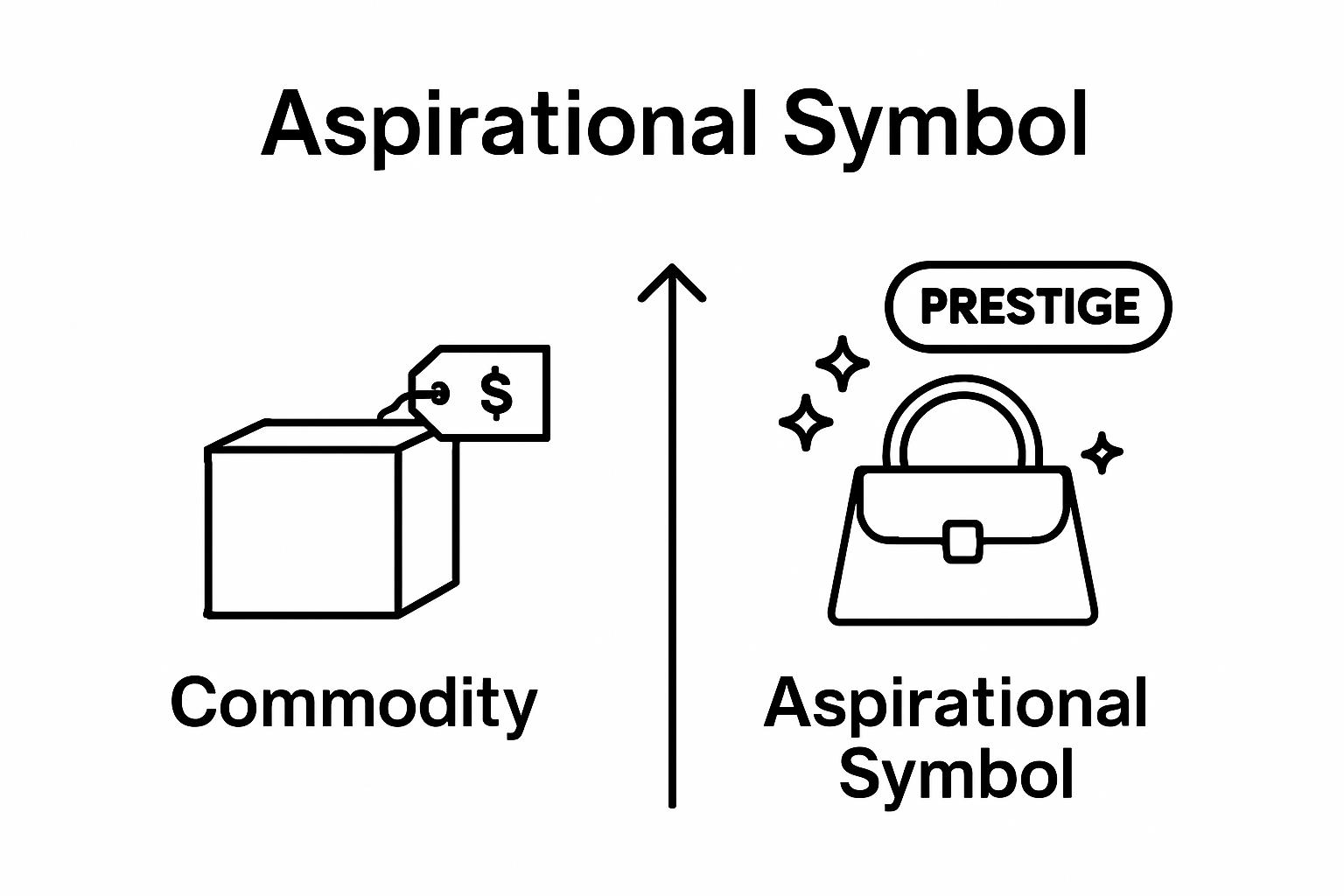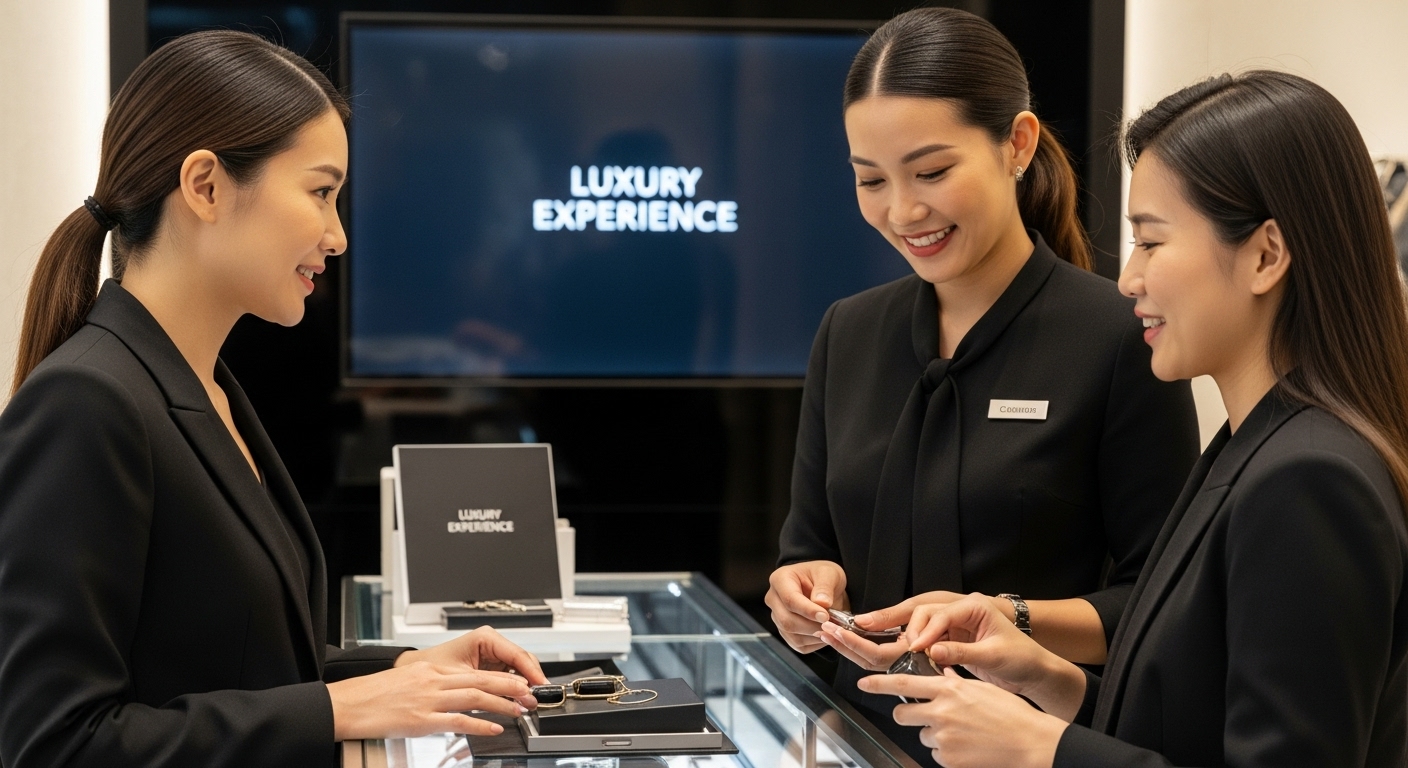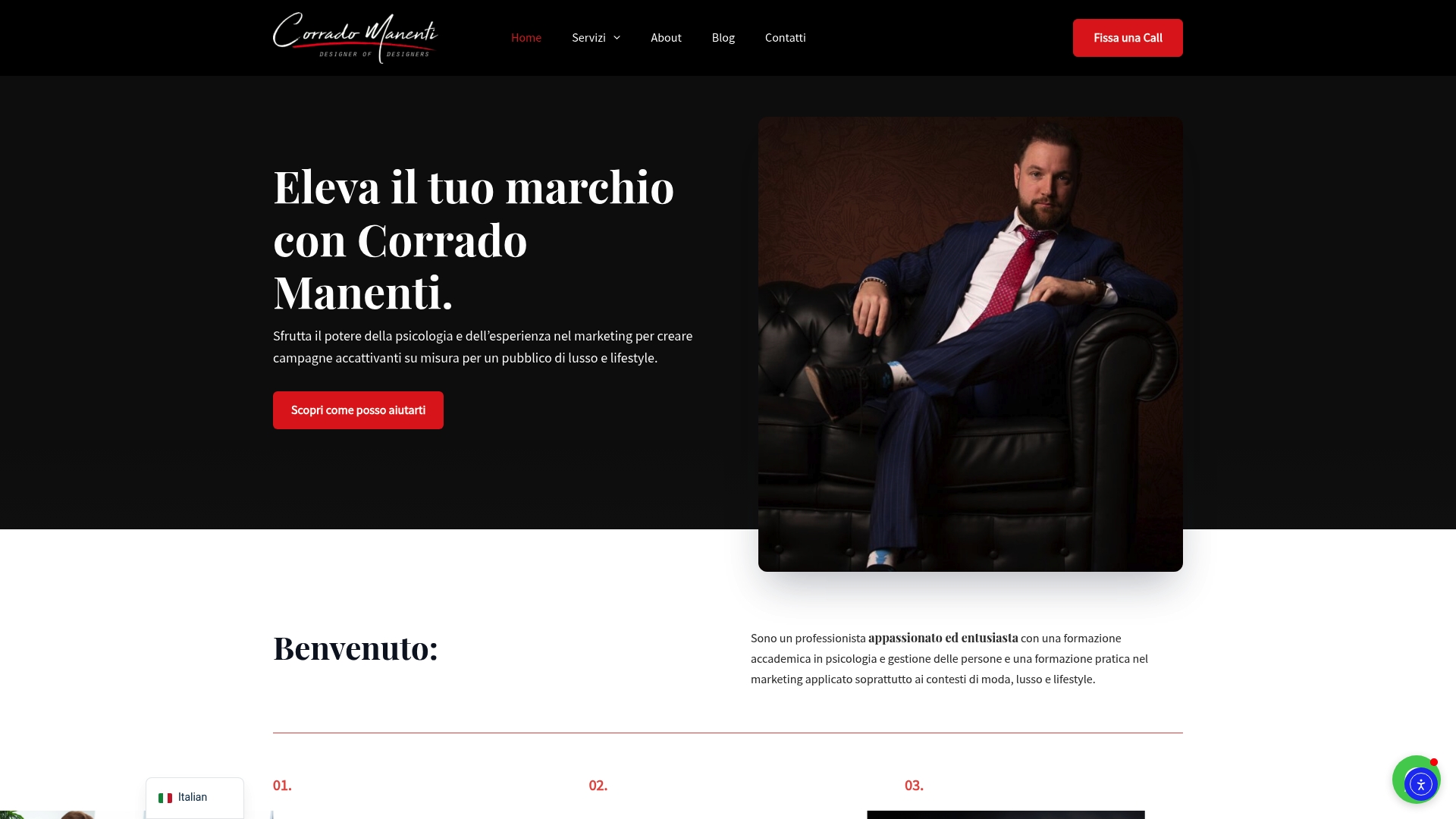Luxury brands are not just selling handbags or watches. They are crafting experiences that make customers feel special in ways ordinary products cannot. Get this. A Harvard Business School study found that emotional and symbolic differentiation is even more powerful than physical features in luxury branding. Most people assume it is all about rare materials or price tags. The real success comes from making buyers feel seen and part of an exclusive story.
Table of Contents
- What Is Brand Differentiation In Luxury?
- The Importance Of Brand Differentiation In The Luxury Sector
- Key Concepts In Luxury Brand Differentiation
- Real-World Examples Of Successful Brand Differentiation
- How Brand Differentiation Shapes Customer Experience In Luxury
Quick Summary
| Takeaway | Explanation |
|---|---|
| Emotional connection is key | Luxury brands should prioritize emotional narratives to resonate with discerning consumers. |
| Craftsmanship and authenticity matter | Exceptional quality and a commitment to heritage enhance brand storytelling and appeal. |
| Create exclusive experiences | Differentiation involves offering unique interactions that elevate consumer engagement beyond products. |
| Continuous innovation is crucial | Luxury brands must innovate while preserving their core identity to stay relevant and distinct. |
| Symbolic value drives purchases | Consumers often seek products that represent identity and aspiration rather than mere functionality. |
What is Brand Differentiation in Luxury?
Brand differentiation in luxury represents a strategic approach to establishing a unique market position by creating distinctive value propositions that transcend traditional product features. According to Harvard Business School research, luxury brand differentiation goes beyond mere product characteristics and focuses on developing a profound emotional and symbolic connection with discerning consumers.
The Essence of Luxury Brand Identity
Unique brand differentiation in luxury markets involves crafting a narrative that communicates exclusive attributes, heritage, and unparalleled quality. This process requires brands to develop strategic elements that set them apart from competitors, such as:
- Exceptional craftsmanship and meticulous attention to detail
- Rare materials and innovative design techniques
- Compelling brand storytelling rooted in authentic historical narratives
Luxury brands must communicate these distinctive qualities through carefully curated experiences that resonate with their target audience’s aspirations and values. By exploring our guide on luxury branding best practices, you can gain deeper insights into creating a compelling brand identity.
Strategic Components of Differentiation
Successful brand differentiation in luxury encompasses multiple strategic dimensions. These include creating an exclusive brand persona, developing unique product design languages, and establishing extraordinary customer experiences that reflect the brand’s core values. Brands must continuously innovate while maintaining their fundamental identity, ensuring they remain relevant yet unmistakably distinctive in an increasingly competitive global market.
This table compares the strategic components that luxury brands use to differentiate themselves in a competitive market, emphasizing areas beyond traditional product features.
| Strategic Component | Purpose |
|---|---|
| Exclusive Brand Persona | Positions the brand as unique and sets it apart from competitors |
| Unique Product Design Language | Communicates distinction through signature aesthetics and innovation |
| Heritage and Authenticity | Builds trust and allure through historical narratives and proven craftsmanship |
| Customer Experience Innovation | Creates memorable, personalized, and immersive interactions |
| Emotional and Symbolic Storytelling | Establishes deep connections and resonance with consumer values and aspirations |
The ultimate goal of brand differentiation is not just to distinguish oneself visually or functionally, but to create a profound emotional resonance that transforms product perception from mere commodity to aspirational symbol.
The Importance of Brand Differentiation in the Luxury Sector
Brand differentiation represents a critical strategic imperative in the luxury market, where competition is intense and consumer expectations are extraordinarily sophisticated. According to research published in the Journal of Marketing, luxury brands must develop profound symbolic meanings that transcend traditional product attributes to maintain competitive advantage.
Economic and Strategic Significance
In the luxury sector, brand differentiation directly impacts economic performance and market positioning. Brands that successfully differentiate themselves can command premium pricing, cultivate deeper customer loyalty, and establish unique market territories. The strategic importance manifests through several key dimensions:
- Creating barriers to direct competitive imitation
- Generating higher perceived value and consumer willingness to pay
- Establishing emotional connections beyond functional product benefits
Learn more about consumer behavior insights that drive luxury market dynamics and help brands understand sophisticated consumer expectations.
Psychological and Emotional Positioning
Beyond economic metrics, brand differentiation in luxury serves profound psychological functions. Luxury consumers do not merely purchase products they acquire symbolic representations of identity, aspiration, and social status. Successful differentiation transforms brands from commodity providers into cultural icons that represent specific lifestyles, values, and exclusive experiences.
The most effective luxury brands understand that differentiation is not about being different for its own sake, but about creating meaningful narratives that resonate deeply with target consumers’ self-perception and emotional landscape.
 This approach requires continuous innovation, authentic storytelling, and a nuanced understanding of evolving consumer desires.
This approach requires continuous innovation, authentic storytelling, and a nuanced understanding of evolving consumer desires.
Key Concepts in Luxury Brand Differentiation
Luxury brand differentiation represents a sophisticated strategic framework that transcends traditional marketing approaches. According to research in luxury brand management, effective differentiation involves creating complex narrative ecosystems that communicate exceptional value beyond physical product attributes.
Foundational Differentiators
Luxury brands establish unique market positions through several critical conceptual dimensions that elevate their perceived value.
Below is a table summarizing the foundational differentiators that elevate luxury brands above standard market offerings and help establish their unique positioning.
| Foundational Differentiator | Description |
|---|---|
| Heritage and Authenticity | Communicates deep historical roots and genuine craftsmanship traditions |
| Exclusivity | Implements limited access and scarcity strategies |
| Exceptional Craftsmanship | Showcases unparalleled technical expertise and design innovation |
| Compelling Storytelling | Crafts narratives rooted in brand history and core values |
| Symbolic Value | Associates the brand with identity, aspiration, and social status |
| Experiential Engagement | Delivers multisensory and tailored experiences beyond product attributes |
- Heritage and Authenticity: Communicating deep historical roots and genuine craftsmanship traditions
- Exclusivity: Developing limited access and scarcity strategies
- Exceptional Craftsmanship: Demonstrating unparalleled technical expertise and design innovation
Explore our insights on luxury consumer behavior to understand how these differentiators influence purchasing decisions.
Narrative and Experiential Positioning
Beyond tangible product characteristics, luxury brand differentiation relies heavily on creating immersive narratives and transformative experiences. Successful brands construct complex emotional landscapes that position their offerings as more than mere products they become symbolic representations of lifestyle, aspiration, and personal identity.
The most sophisticated luxury brands understand that true differentiation emerges from the ability to craft compelling stories that resonate deeply with consumers’ complex psychological motivations. This approach requires continuous innovation, nuanced understanding of cultural dynamics, and an unwavering commitment to maintaining brand mystique and emotional engagement.
Real-World Examples of Successful Brand Differentiation
According to strategic brand management research, successful luxury brand differentiation requires creating unique narratives that transcend traditional product positioning and establish profound emotional connections with consumers.
Innovative Heritage Positioning
Luxury brands demonstrate remarkable differentiation strategies by leveraging their unique historical narratives and cultural significance. Some exemplary approaches include:
- Hermès: Emphasizing generational craftsmanship and artisanal production techniques
- Rolex: Creating a narrative of precision engineering and timeless achievement
- Chanel: Positioning brand identity around revolutionary design and female empowerment
Explore our comprehensive guide on luxury branding best practices to understand sophisticated brand positioning techniques.
Experiential Brand Differentiation
Beyond product characteristics, leading luxury brands differentiate themselves by creating immersive experiences that transform consumer interactions. These brands understand that differentiation occurs not just through what is sold, but how it is presented, experienced, and remembered.
Successful luxury brands craft intricate ecosystem of experiences that communicate exclusivity, sophistication, and emotional resonance. They meticulously design every touchpoint consumer interaction to reinforce their unique brand narrative, from boutique design to personalized customer service, ensuring that each engagement reflects the brand’s distinctive identity and values.
How Brand Differentiation Shapes Customer Experience in Luxury
Research from international marketing studies reveals that brand differentiation fundamentally transforms customer experience by creating multilayered interactions that transcend traditional transactional relationships. Luxury brands strategically design every touchpoint to communicate exclusivity and emotional resonance.
Psychological Engagement Mechanisms
Brand differentiation in luxury operates through sophisticated psychological engagement mechanisms that create profound customer connections. These mechanisms transform purchasing from a mere transaction into an immersive narrative experience:
- Emotional Storytelling: Crafting brand narratives that resonate with individual consumer aspirations
- Sensory Experience Design: Creating multisensory interactions that stimulate emotional responses
- Personal Significance: Developing product and service experiences that feel uniquely tailored
Learn more about creating exceptional luxury brand experiences to understand these intricate psychological dynamics.
Transformative Customer Interaction Strategies
Luxury brands leverage differentiation to convert standard customer interactions into extraordinary moments of personal validation. They meticulously engineer each interaction to communicate exclusive value beyond physical product attributes.
 This approach requires understanding consumers not just as buyers, but as participants in an elaborate brand narrative that reflects their deepest personal aspirations and self-perception.
This approach requires understanding consumers not just as buyers, but as participants in an elaborate brand narrative that reflects their deepest personal aspirations and self-perception.
Elevate Your Luxury Brand With Proven Differentiation Strategies
Luxury brands today face the critical challenge of breaking through fierce competition by achieving real brand differentiation. This article explores the urgent need for crafting compelling narratives and delivering exclusive experiences—pain points every luxury marketer knows too well. If your goal is to move beyond product features and build emotional connections that truly set your brand apart, now is the time to act.
Discover expert insights on Marketing Fashion and uncover psychology-driven frameworks designed for the luxury sector.

Partner with Corrado Manenti for strategies that merge deep consumer psychology with innovation and branding excellence. Start building a distinct and memorable luxury brand experience today. Visit our main site to learn more and take the next step in your differentiation journey.
Frequently Asked Questions
What is brand differentiation in luxury markets?
Brand differentiation in luxury markets refers to a strategic approach where companies create unique value propositions that go beyond traditional product features, emphasizing emotional and symbolic connections with consumers.
Why is brand differentiation important in the luxury sector?
Brand differentiation is crucial in the luxury sector as it helps brands maintain competitive advantage, command premium pricing, and cultivate deeper customer loyalty by establishing unique market positioning.
How do luxury brands create emotional connections with consumers?
Luxury brands create emotional connections through compelling brand storytelling, exceptional craftsmanship, and curated experiences that resonate with consumer aspirations and values.
What are some key components of effective brand differentiation in luxury?
Key components include heritage and authenticity, exclusivity, exceptional craftsmanship, and immersive narrative positioning that elevates perceived brand value beyond just physical product attributes.



